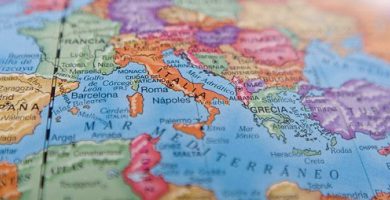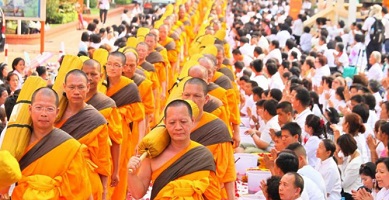What was the Vietnam War?
We explain what the Vietnam War was, its timeline and its causes. In addition, its consequences and who won this conflict.
-
What was the Vietnam War?
The Vietnam War, also known as the Second Indochina War or War against the United States (in Vietnam) was a military conflict that took place between 1955 and 1975 , between the Republic of Vietnam (or South Vietnam) and the Communist insurgent guerrillas of the National Liberation Front of Vietnam (North Vietnam or Viet Cong), as well as its allied countries in the context of the Cold War.
The Vietnam War was one of the largest and most famous military conflicts that occurred between the socialist bloc led by the USSR and the capitalist bloc led by the US . The two sides faced were:
- The Republic of Vietnam, with its American allies, the Kingdom of Cambodia and the Kingdom of Laos, with the military support of Australia, South Korea, the Philippines, New Zealand, Thailand and Taiwan.
- The Democratic Republic of Vietnam and the Viet Cong army, along with the Khmer Rouge (Communist Army of Cambodia) and the Pathet Lao (Communist Army of Laos), with military support from China, North Korea, Cuba and the Soviet Union.
Twenty years long, this war had a great human cost especially in the ranks of the Vietnamese factions faced (250,000 dead and 1,170,000 South Vietnamese wounded, compared to 1,000,000 dead and 600,000 North Vietnamese wounded), and in civilian populations both from Vietnam (2,000,000 deaths), Cambodia (200,000 to 300,000) and Laos (20,000 to 200,000).
-
Timeline
The most relevant events in the conflict are organized as follows:
- 1954 . The Geneva Accords put an end to the war between France and Indochina, and divide the colony into three nations: Laos, Cambodia and Vietnam. The latter is divided into two different countries until the holding of a unification referendum in 1956.
- 195 5 . The US CIA helps General Ngo Dinh Diem to take a coup in South Vietnam and establishes a military dictatorship to prevent elections.
- 1959 . Armed resistance begins in southern Vietnam, sponsored by its northern sister, leading to a Civil War.
- 1961 . US President John F. Kennedy promises the government of South Vietnam his help against “communist terrorism.”
- 1964 . The victories of the insurgent army give him control of 60% of the country. The US manufactures a cause to enter the war with the Gulf of Tonkin Incident, through a false attack on its naval forces.
- 1965 . Massive bombing of the United States in North Vietnam and landing of its troops for the first time. In retaliation, the Viet Cong operates the US embassy in Saigon.
- 1967 . Of its 485,000 men in Vietnam, the US has lost more than 16,000. A presidential regime is established in southern Vietnam, replacing the pro-American dictatorship.
- 1969 . Paris conferences begin and President Nixon of the United States announces the repatriation of 25,000 soldiers.
- 1970-1 . American invasion of Cambodia and then of Laos, in persecution of the communist armies of these countries, wreaking havoc on the peasant population .
- 1972 . Suspension of negotiations. American bombing operations Linebacker and Linebacker II.
- 1973 . The ceasefire is signed in Paris. The US leaves the war .
- 197 6 . The Spring Offensive begins that will lead the communist troops to capture Saigon and end the war.
-
Causes of the Vietnam War

It should be remembered that Vietnam, as well as Laos and Cambodia, were French colonies in Asia, which after World War II found the ideal time to proclaim their independence.
However, the new country failed to agree on the two radical trends within it, and ended up being divided into two different countries from parallel 17: North Vietnam and South Vietnam.
The war was due to the US interrupting attempts to reunify the country under a nationalist coalition in which all political sectors intervened, financing a corrupt, atrocious and inefficient dictatorship.
This mobilized the popular uprising and the formation of the National Liberation Front, which unleashed a civil war in southern Vietnam. This situation was used by northern Vietnam to try to reunify the country under a communist government.
-
Consequences of the Vietnam War
In addition to the tragic and irreparable consequences left by all wars, such as millions of citizens killed, displaced or refugees, the Vietnam War caused severe damage to the country’s infrastructure and its vegetation, due to the use of napalm and chemical weapons. Other consequences were:
- The reunification and reconstruction of Vietnam , under the same flag and a single government . The economic and social challenges of this new government were particularly severe, considering the state of ruin in which the war left the country.
- The United States suffered an overwhelming defeat . This was a very severe blow to the military and political image of the country in the world, which served to change the idea that this nation had in the world and that its population had of itself.
- The communist movements in Laos and Cambodia . Defeated the US, revolutionary leaders from neighboring countries found a favorable outlook for their own totalitarian regimes.
-
Who won the Vietnam War?

The Vietnam War was won by the Viet Cong, when the US agreed to withdraw its troops in 1973 , when a ceasefire was signed in Paris. South Vietnam was abandoned to its fate in the midst of conflict, however, and in 1976 the communist troops seized their capital from Saigon and deposed the government, considering the forced reunification of the country established under the authority of Hanoi.





